| Organisation | Description | Location | |
|---|---|---|---|
 |
Founded in 1993, Australian National University Medical School offers an integrated curriculum in the fully accredited four-year Doctor of Medicine and Surgery (MChD). The programme addresses four themes: Medical Sciences, Clinical Skills, Population Health, and Professionalism and Leadership. |
ACT |
Visit |
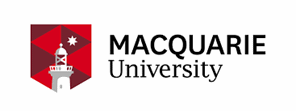 |
Established in 1964, Macquarie University offers a Doctor of Medicine (Macquarie MD) integrating four graduate capabilities – Scientist and Scholar, Clinical Practitioner, Engaged Global Citizen, and Professional – across the programme. |
NSW |
Visit |
 |
Since 1856, The University of Sydney School of Medicine has been dedicated to developing caring, clinically outstanding, research-capable and globally aware medical graduates. As one of the highest-rated education and research institutions in the Asia-Pacific region, the school of medicine offers a range of undergraduate medicine and health courses, post graduate medicine and health courses, a Doctor of Medicine program, professional development and short courses. The school of medicine aims to improve human health and welfare through education, research and healthcare. |
NSW |
Visit |
 |
Established in 1960, UNSW Medicine is building the future of healthcare with its leading educators, researchers and clinicians and high achieving students. As one of the world’s top 50 medical faculties and 5th in Australia (QS World University Rankings by Subject 2018), UNSW Medicine is committed to improving healthcare delivery and outcomes for every patient. UNSW Medicine has eight schools in Sydney, a Rural Clinical School with additional country campuses throughout NSW and close affiliations with some of Australia’s top hospitals and healthcare organisation and affiliated research centres and institutions. |
NSW |
Visit |
 |
Since 2009, Western Sydney University School of Medicine has offered a medical degree program. It first offered a Bachelor of Medicine/Bachelor of Surgery (MBBS) degree. In 2019, the Doctor of Medicine (MD) program was introduced to replace this. The school offers newer medical school facilities in the Sydney area and a flexible mix of online and campus studies. |
NSW |
Visit |
 |
Founded as a university in 1975, the University of Wollongong has developed an outstanding reputation for its learning environments. The UOW School of Medicine provides educational experiences that are engaging, challenging and relevant for its students. They focus on producing graduates who can work in a diversity of settings including rural and regional areas of Australia, as well as internationally. The school offers a range of courses in graduate medicine, Indigenous health, medical and exercise science, pre-medicine, science and health and nutrition and dietetics. |
NSW |
Visit |
 |
Established in 1951, University of Newcastle opened its doors to its first students in 1952. 2018 marked the University of Newcastle's 40th Anniversary of medicine and the 10th year of offering the Joint Medical Program. The university offers a five-year Bachelor of Medical Science degree and Doctor of Medicine – Joint Medical Program (MD-JMP). This programme is delivered jointly by the University of Newcastle and University of New England, and supported by the Central Coast Local Health District and the Hunter New England Local Health District. |
NSW |
Visit |
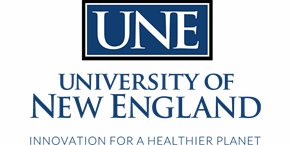 |
UNE was established in 1938 as the New England University College, a College of the University of Sydney. From 1954, the university became fully independent and pioneered teaching to external students by correspondence. The School of Rural Medicine offers a Joint Medical Program (JMP) in partnership with the University of Newcastle, and the Hunter New England and Central Coast Local Health Districts. |
NSW |
Visit |
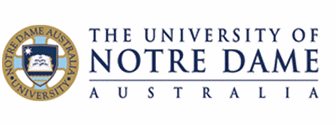 |
Established in 1986, Notre Dame is a private Catholic University, extending from WA to NSW. The School of Medicine offers a Doctor of Medicine (MD), 4-year graduate-entry program which combines basic and clinical sciences, clinical skills and communication, population and public health, and professional and personal development. The School of Medicine places a strong emphasis on supporting every student individually to enable them to become excellent, caring and ethical doctors. |
NSW and WA |
Visit |
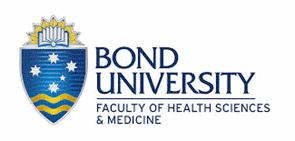 |
Established in 1989, Bond is Australia’s first private non-profit university. The Faculty of Health Sciences and Medicine at Bond University offers a medical programme known for its accelerated pathway towards practicing as a doctor in Australia and New Zealand. The programme incorporates a personalised educational experience with small classes sizes and the comprehensive use of industry equipment and the latest technologies. |
QLD |
Visit |
 |
Founded in 1971, Griffith opened its doors to students in 1975. The School of Medicine was established in 2005. Griffith offers a four year graduate-entry Doctor of Medicine programme accredited by the Australian Medical Council and incorporating a strong community focus |
QLD |
Visit |
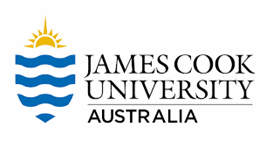 |
Founded in 1961, JCU became a university in 1970. As one of Queensland’s second oldest universities, the College of Medicine and Dentistry is a leader of positive change in health and medical care for communities of tropical Australia. The College is home to world-renowned academic and staff with specialties in general practice, rural medicine, vascular biology, tropical health and infectious diseases. They offer a range of undergraduate and postgraduate courses. |
QLD |
Visit |
 |
UQ Medicine is a leading provider of medical education and research in Queensland, with the country's largest medical degree program. Their case-based learning program includes graduate entry and school-leaver entry streams. UQ Medicine also offers early exposure to clinical training and a vast array of opportunities to extend learning through special projects, research experience and clinical placements overseas. |
QLD |
Visit |
 |
Established in 1885, The University of Adelaide, Adelaide Medical School is the largest school in the University, providing a world-class innovative and collaborative learning environment for students studying translational medicine and research. The medical school offers a range of undergraduate and postgraduate medicine and surgery degrees. |
SA |
Visit |
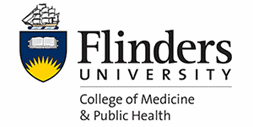 |
Founded in 1966, Flinders University is ranked within the world's top 500 institutions in the academic ranking of world universities. The Flinders medical programme is internationally recognised for its innovative curriculum that integrates clinical and academic training and clinical medicine with a strong underpinning in biomedical science. The school of medicine offers a variety of undergraduate, postgraduate and higher degree by research courses. |
SA |
Visit |
 |
Founded in 1858, The University of Melbourne’s School of Medicine is the oldest medical school in Australia and is ranked 17th in the world and first in Australia in the 2018 QS Subject Rankings. Internationally renowned for its global leadership in teaching and training, health research, policy and practice, the school also offers world-class facilities and laboratories. The school of medicine has an extensive range of undergraduate and postgraduate programs, courses and subjects covering all major fields of medicine and rural health. |
VIC |
Visit |
 |
Founded in 1958, Monash University is one of the leading providers of health care education in Australia. The university includes 10 schools, various centres and institutes, each with a unique purpose and focus. Monash University's Clinical Medicine programme is ranked in the Top 100 in the world. The university offers an extensive range of undergraduate, postgraduate and professional shortcourses/workshops for healthcare professionals. |
VIC |
Visit |
 |
Founded in 1974, Deakin University was one of the first universities in Australia to specialise in distance education and the first to be established in regional Victoria. Established in 2008, Deakin University's School of Medicine is dedicated to training work-ready medical graduates who are able to respond to the varied needs of clinical practice. The medicine, medical imaging and optometry degrees are specifically geared towards rural work shortages in Australia. The school of medicine offers a range of undergraduate, postgraduate and research courses grouped under several disciplines. |
VIC |
Visit |
 |
Established in 1957, the University of Western Australia's School of Medicine is ranked 39 in the world for Clinical Medicine (ARWU 2018). UWA’s Medical School provides an infinite source of teaching and learning for students who share the school's goal of delivering better health outcomes today and into the future. The school of medicine offers undergraduate and postgraduate courses in clinical medicine supervised by leaders in medical education. A strong research culture also infuses all medicine courses at UWA. |
WA |
Visit |
 |
Founded in 2015, Curtin Medical School’s places a strong emphasis on primary care to position medical graduates well for rural and remote practice and outer suburban locations, where there is a shortage of doctors. Medical students practice clinical skills in rooms that simulate a doctor’s consulting room and have access to anatomical teaching models and other resources. The school of medicine offers undergraduate, postgraduate, interprofessional education, Indigenous programs and fieldwork. |
WA |
Visit |
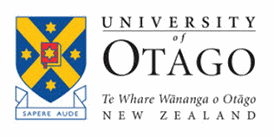 |
Established in 1875, the Otago Medical School (OMS), part of the University of Otago Division of Health Sciences, has a long history of providing research-based undergraduate, postgraduate, professional, and academic programmes of study of an international standard. |
Dunedin |
Visit |
 |
Founded in 1883, the University of Auckland is the largest and highest ranked institution in the country. The university offers a full range of health and biomedical science programmes at the undergraduate level, a wide range of subjects, programmes and courses for postgraduate students and doctoral programmes. |
Auckland |
Visit |